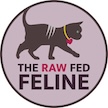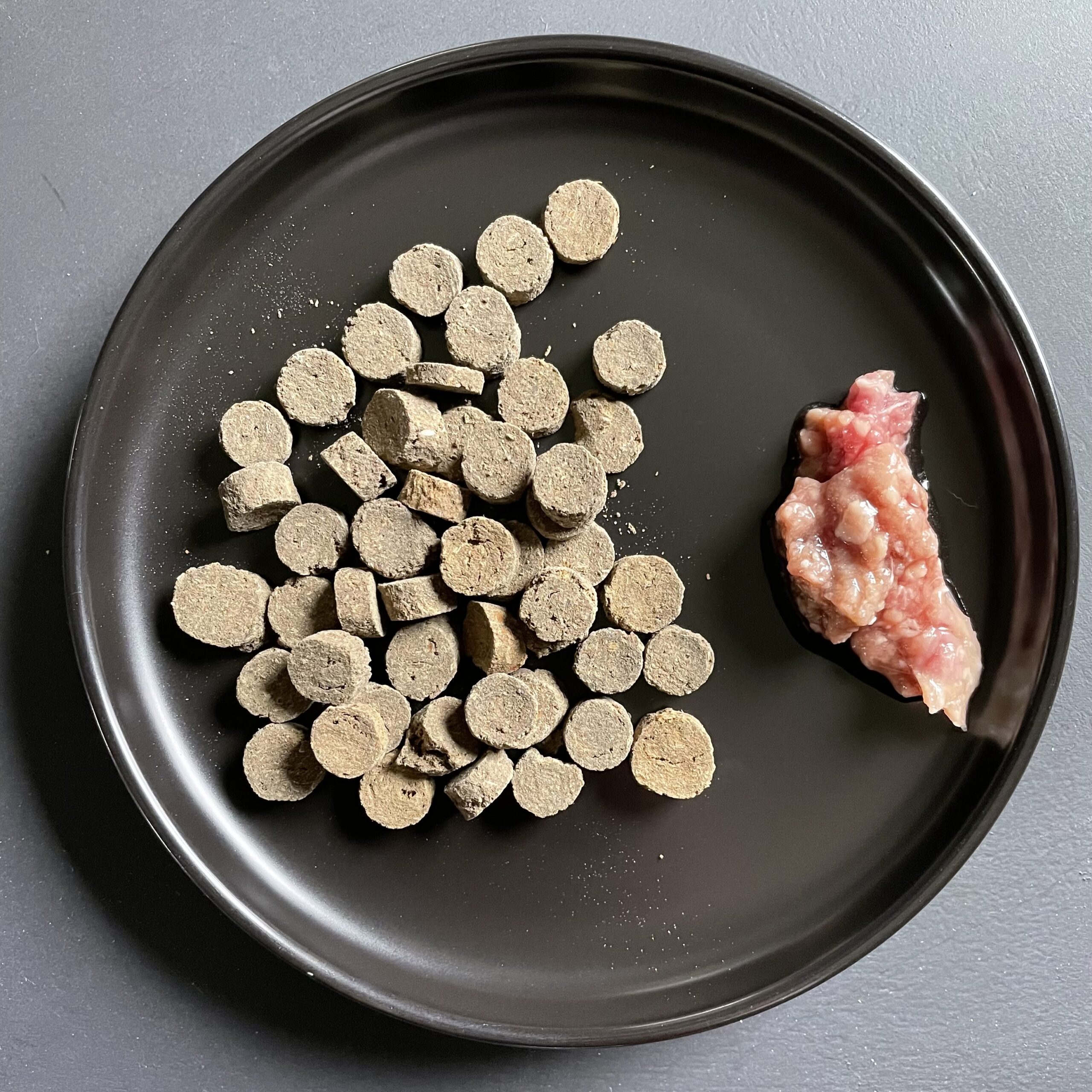Ok, so you’re ready to have a raw fed feline (yay!). You appreciate that cats are little carnivores, have checked out the various ways to feed raw, have decided which raw food to start with, and know how to feed raw safely. Now it’s time to introduce new foods and begin the transition process. This is where you will need a lot of patience—because even though you are excited about this new healthy diet, your cat may not be.
Learning about food
Cats have a reputation of being “picky” when it comes to their food. In contrast to dogs, who are not known for their discriminating palates (they eat poop, for crying out loud!), cats are much more particular about what they eat. This particularity is based on survival instinct. They are not being picky without reason. Kittens learn what is food and what is not food from their mother. Any food that they have not been exposed to falls into the category of potentially “not safe.”
Bradshaw et al. (1996) stated that “the variety of foods accepted by adult cats is related to foods that were presented in their early life, especially those foods offered after weaning” (p. 206). When you are transitioning an adult cat to a new diet, you are teaching them that this new stuff is safe food. This process takes time, commitment, and a whole lot of patience on your part.
Different aspects of food
It’s also important to know that food isn’t just about taste for cats. Other aspects of food are important to take into account as well. “Odour may be used as a secondary cue in detecting prey, and the sense of smell as well as taste must be involved in selecting food, but the temperature and texture of food are also important” (Bradshaw et al., 1996, p. 206).
Let’s look at these different aspects of food:
Texture: dry and raw foods are nothing alike in texture; ground/chunk/shredded raw meats are different from each other; fur and feathers of whole prey are different than other raw foods
Smell: dry food has smell and flavor enhancers; cooked meat has more smell than raw
Taste: dry kibble is made to be extremely palatable to cats; if a cat has only eaten chicken, then any other protein/flavor is unfamiliar
Temperature: some cats prefer room temp or slightly warmed food (“freshly killed mouse body” temp) and refuse food straight from the fridge
Consistency: adding more or less liquid to raw foods changes the consistency
It can be very helpful to keep track of which aspects of food are most important to your individual cat by keeping a food journal. This information can help determine what your cat needs to accept a new food more easily. Putting enticements or toppers on new foods is a way to provide a sense of familiarity for your cat—crumbled freeze dried treats can help with texture, slightly warming up the food can help with temperature, sardine juice can help increase smell, crushing dry food into a powder can help with initial taste, etc. These enticements that add familiarity can help your cat learn that the new food is safe to eat.
Transition process
Think of the transition process as a number line with 0 as “my cat free feeds on dry food” and 100 as “my cat eats 100% raw food.” There are many numbers in between those two points. Number 1 is to stop free feeding and establish set meals with your cat. You set down their dish for 15-20 minutes and then pick it up. No more food until the next meal. You may need to offer more frequent meals at first to minimize stress. Once those meals are set, then you start the SLOW introduction of the new food along with added enticements to increase familiarity. If your cat is currently eating dry food, you may be able to transition from dry to raw or your cat may need to move from dry to canned to raw.
The transition process involves 2 important aspects of learning: exposure and paired association. Exposure is just what it sounds like: exposing your cat to the new food to help them get used to it. Paired association in this situation is when you pair your cat’s familiar food with the new food to link those together.
Introduce new food
Let’s say you start by putting some new food on a dish next to your cat’s current food. If your cat stops eating their food altogether due to this foreign/”unsafe” stuff being placed near them, then you need to move the dish farther away until your cat will eat their food again. This may mean 2 feet away or in the next room. How far away doesn’t matter. It’s the starting point of the process. Over time, you slowly move the dish closer until it is next to their food in the same dish. This may take 3 days or 6 months. The time it takes is not the focus. The steady exposure of the new food and the paired association of known food with new food is the focus.
Remember that your cat is interacting with the new food through smell and sight before they ever put it near their mouth. Keeping track of all of these little steps between 1-100 is crucial for you to see the progress being made, so you don’t give up. It’s important to realize that your cat is participating in the transition process, even without tasting the new food yet.
Slow and steady
If your cat is willing to have the new food in the dish, then that is your cat’s starting point. But don’t move too quickly in your excitement. Wherever your cat is starting from, you want to take it slowly and move at your cat’s pace. The transition process is a marathon–not a sprint. Your cat will get there, but you have to respect their starting point and their pace. 98 out of 100 times a transition is not going smoothly is because the human in the equation is moving too fast for the cat. (I made that number up, but you get my point). Start with 1/8 tsp of new food and gradually increase the new food while reducing the old food. If at any point in this process your cat stops eating, then take a step back and move more slowly.
You can portion raw or canned food into small bite size amounts and freeze—then thaw before serving. This way you aren’t throwing out lots of food (and money). It also helps you not get overly frustrated as your cat takes the time they need to accept the new food. You don’t want to add your stress to the equation. Just keep slowly moving forward along the number line until your cat is 100% eating the new food.
You can do this
You will use this same process any time you introduce new foods to your cat. If you currently feed freeze dried and want to introduce frozen raw food, or if you feed ground raw, but want to introduce chunked food, or if your cat has never had beef before, the process is the same.
Two important things to keep in mind: you cannot starve a cat into eating or use “tough love.” It can be dangerous for a cat to go too long without eating. You will not win a standoff about food with your cat, nor should you even try. The second thing is that many cats are labeled as picky when they are actually feeling nauseous. No cat is going to eat with any kind of enthusiasm if they are feeling nauseous or ill. Some cats who have been on a kibble diet long term can have ongoing issues with gut health and nausea that need to be addressed first.
You really can do this. It is so worth it for your cat’s overall health. It just may take more time and patience than you were expecting!
Reference
Bradshaw, J.W.S., Goodwin, D., Legrand-Defre’tin, V., & Nott, H.M.R. (1996). Food Selection by the Domestic Cat, an Obligate Carnivore. Comp. Biochem. Physiol. Vol. 114A, No. 3, pp. 205-209.


